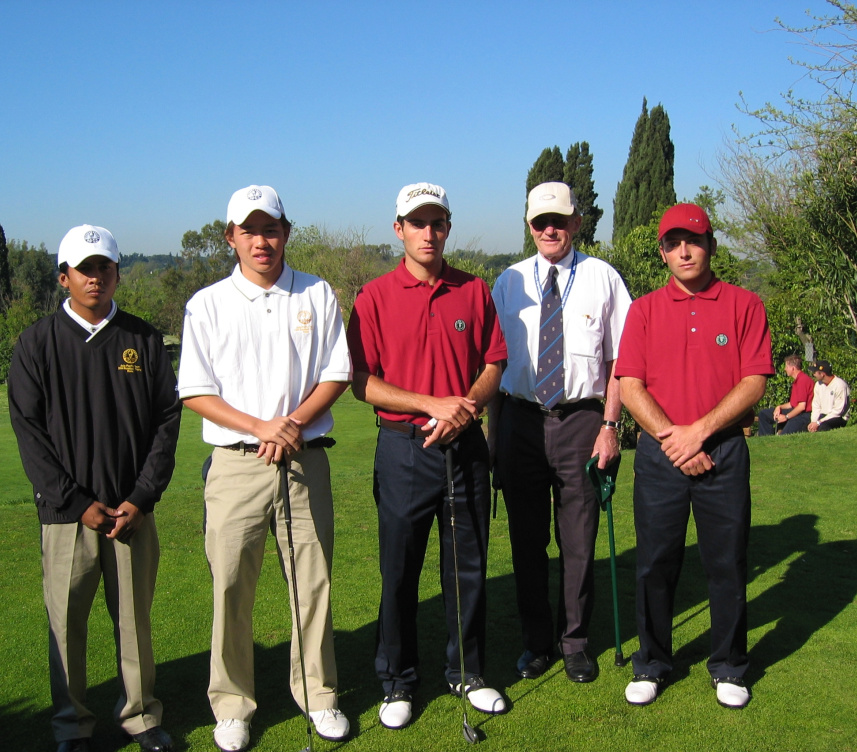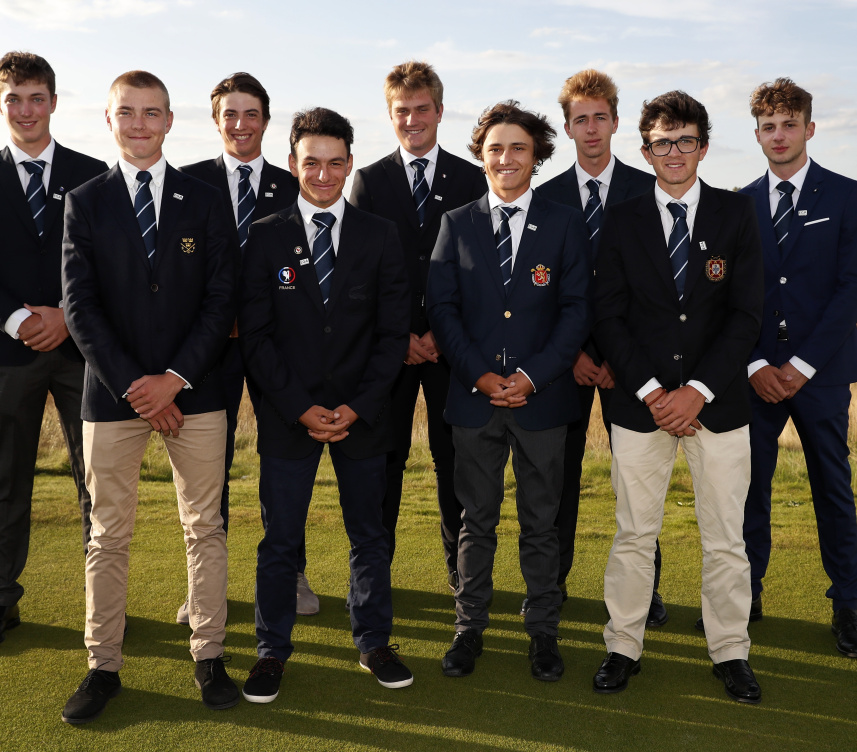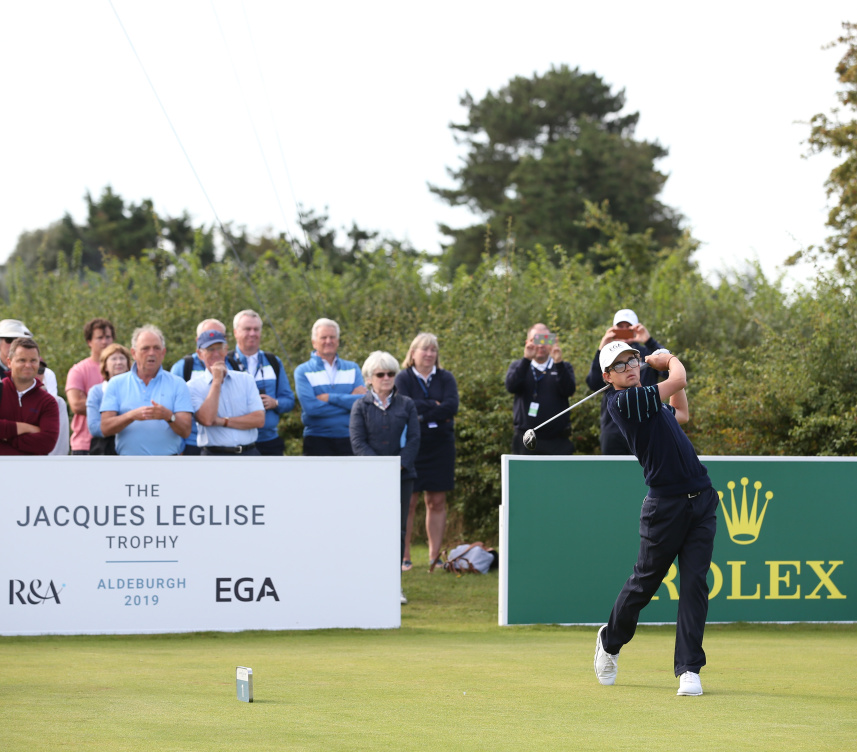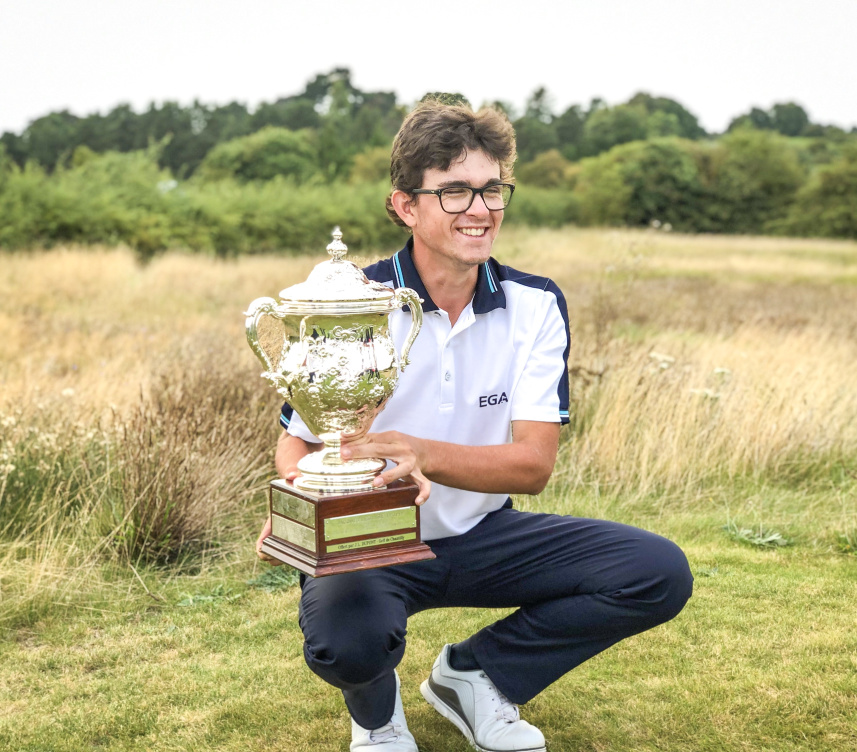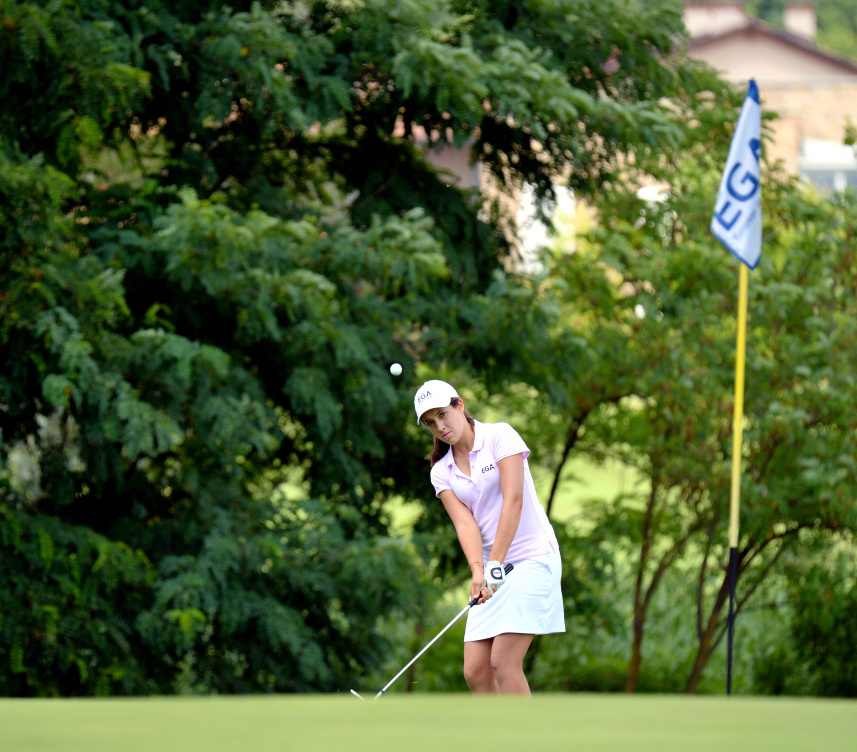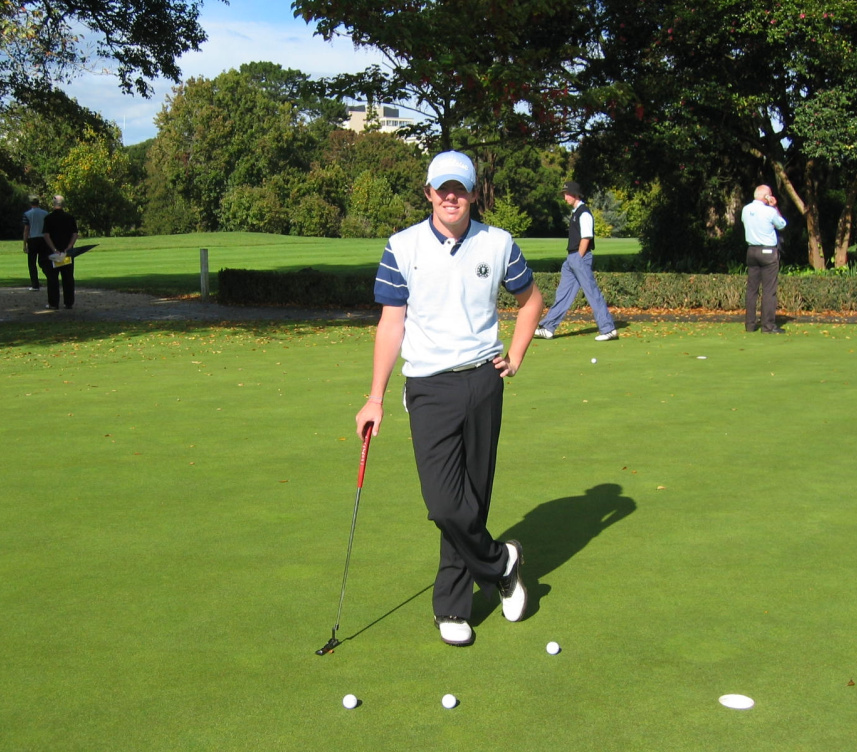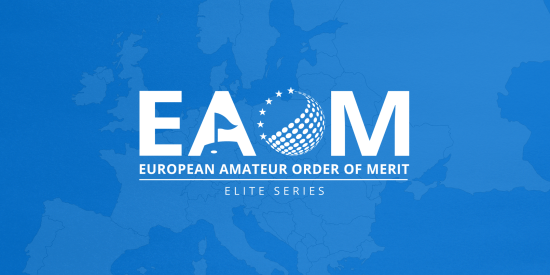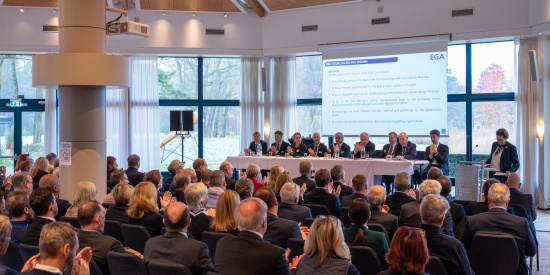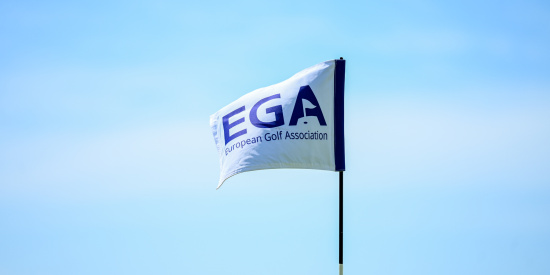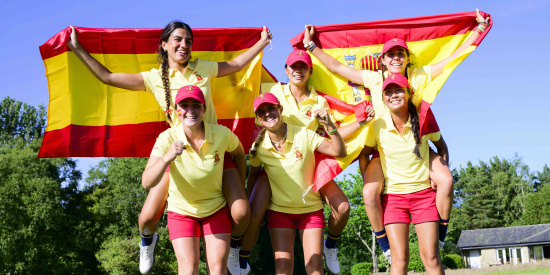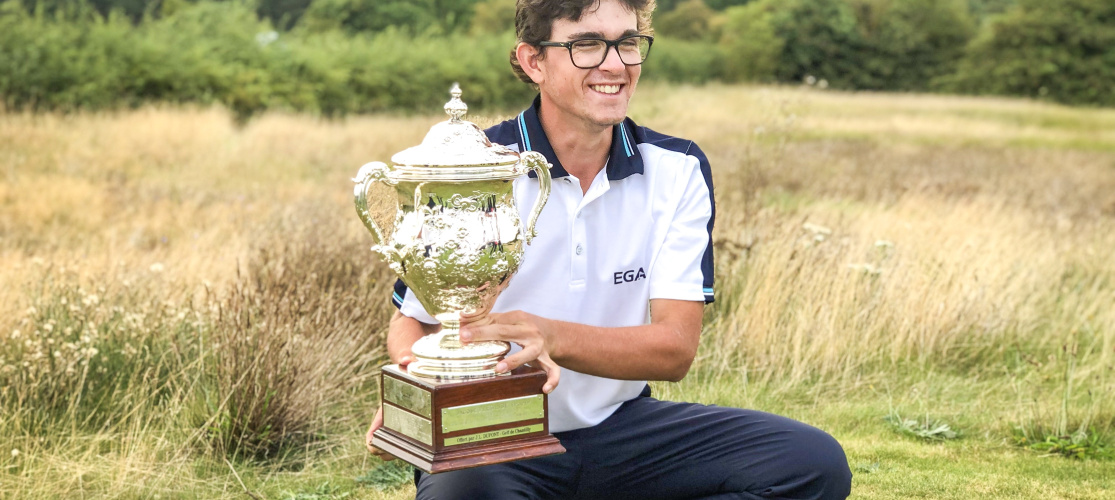
Aspiration through Selection
The follow-on effect of being selected for EGA International Matches
Being selected to represent your country is an impressive achievement. Being selected to represent your continent, an even greater one.
The European Golf Association (EGA) currently selects continental teams for six international matches:
- The European teams for the men’s Bonallack Trophy, played since 1998, and ladies’ Patsy Hankins Trophy, played since 2016, 12-player teams that compete biennially against Asia-Pacific;
- The Continent of Europe Teams for the St. Andrews Trophy, played since 1956, and Vagliano Trophy, played since 1959, respectively nine (men) and eight (ladies) player teams that contest Great Britain & Ireland every other year;
- The EGA also selects the players for the junior editions of the GB&I matches: nine boys (U18) for the Continent of Europe Jacques Léglise Trophy Team (since 1977), and six girls (U16) for the Continent of Europe Junior Vagliano Trophy (since 2011) team, both now played annually.
The most historic of these, the St Andrews Trophy, has helped grow its share of continental major championship winners, including Jose Maria Olazabal (1984), Sergio Garcia (1996), Henrik Stenson (1998), Martin Kaymer and Edoardo and Francesco Molinari (2004).
Many high-profile players have represented the EGA in the other matches over the years, including Rory McIlroy (Bonallack Trophy, 2006), Sergio Garcia (Jacques Léglise Trophy 1995 & 1997), Daniel Willett (Bonallack Trophy, 2008), Anna Nordqvist and Carlota Ciganda (Vagliano Trophy, 2007), just to name a few.
Edoardo and Francesco Molinari ready to tee off at the 2004 Bonallack Trophy
Selection for a continental team is recognition of extraordinary performances in the amateur game and, in many cases, inherently adds to a player’s confidence taking their game to the next level.
A perfect example is Daniel Da Costa Rodrigues’ recent rise. After impressing at the 2018 European Amateur Team Championship, the Portuguese player was the youngest selected member of the 2018 Continent of Europe Jacques Léglise Trophy team. Sitting 2000th in the World Amateur Golf Ranking (WAGR), he was also the lowest-ranked. One year later, having won the Portuguese International Amateur and Portuguese National Amateur Championships this season, Da Costa Rodrigues currently sits 73rd in the WAGR, and was the highest points scorer in his second appearance in the Jacques Léglise Trophy, where he won all four of his matches.
Daniel Da Costa Rodrigues at the 2019 Jacques Léglise Trophy (Photo credit: Getty Images)
Pia Babnik’s performance this season is another recent example. The Slovenian player won the Junior Vagliano Trophy with the Continent of Europe team in June, shortly after which she led the stroke play qualifying stage of the European Ladies’ Team Championship, and one month later, triumphed in the Girls’ Amateur Championship.
Babnik’s Junior Vagliano Trophy teammate, Amalie Leth-Nissen, performed extremely well in the weeks following the team’s victory. The 14-year-old helped the Danish Girls’ Team to their first ever gold medal at the European Girls’ Team Championship and then, despite being the youngest player in the field, put herself in contention in the European Ladies’ Amateur Championship, even holding the lead after an opening 66 (-6).
A clear pathway towards greatness is also being forged by Albane Valenzuela, who has played the Junior Vagliano (2013) and Vagliano Trophies (2015, 2017 & 2019) and who, in that time, has competed vigorously for the European (runner-up 2017) and US Amateur titles (runner-up 2017 and 2019). While having not quite captured the titles, she has been very much crusading the European cause in the US during her college years at Stanford University. Players like Albane provide the platform for those who follow. Moreover, the accolades of representative golf play no small part in scholarship attainment.
Albane Valenzuela at the 2017 Vagliano Trophy
Looking back, Rory McIlroy was instrumental in Europe’s defeat of Asia-Pacific in the 2006 Bonallack Trophy. Although his eventual success as a player was inevitable, one could say his selection, which came before any top-level amateur victories, accelerated his development. The now four-time major winner won the European Amateur Championship just four months after competing in the Bonallack Trophy, earning him a spot in The Open, where he would claim the Silver Medal as leading amateur. Rory has keenly supported the match since, sending messages to the teams.
Rory McIlroy at the 2006 Bonallack Trophy
Céline Boutier, who represented the Continent of Europe on three occasions in the Vagliano Trophy, is another sound example. The year after she was first selected in 2011, the French player won the Trophée Esmond, the German International Amateur and the European Ladies’ Amateur Championship. Seven years on, Boutier was part of the winning European Solheim Cup team at Gleneagles.
Noting that those playing for their continent are perhaps the most likely to achieve and that it is impossible to measure the effect of selection on future performance, it is safe to say that the recognition and associated confidence that comes with selection can certainly accelerate a player’s development.
We at the EGA strongly believe in the experience being delivered to the players during our international matches. Most importantly, the team match play situation at the highest level allows players the opportunity to assess their ability to win. While onlookers may compare the format of play negatively to that most played on the Tours, capturing titles in any format calls on the skills developed when a player is faced with winning or losing – situations that are often memorable not least of all because of their relative infrequency in golf. For an elite player to develop fully, such situations must be actively sought, grasped, and personally assessed.
The EGA emphasises to its continental member national federation coaches and sports directors, and to the players themselves, that selection in its international matches must remain a clear goal.
